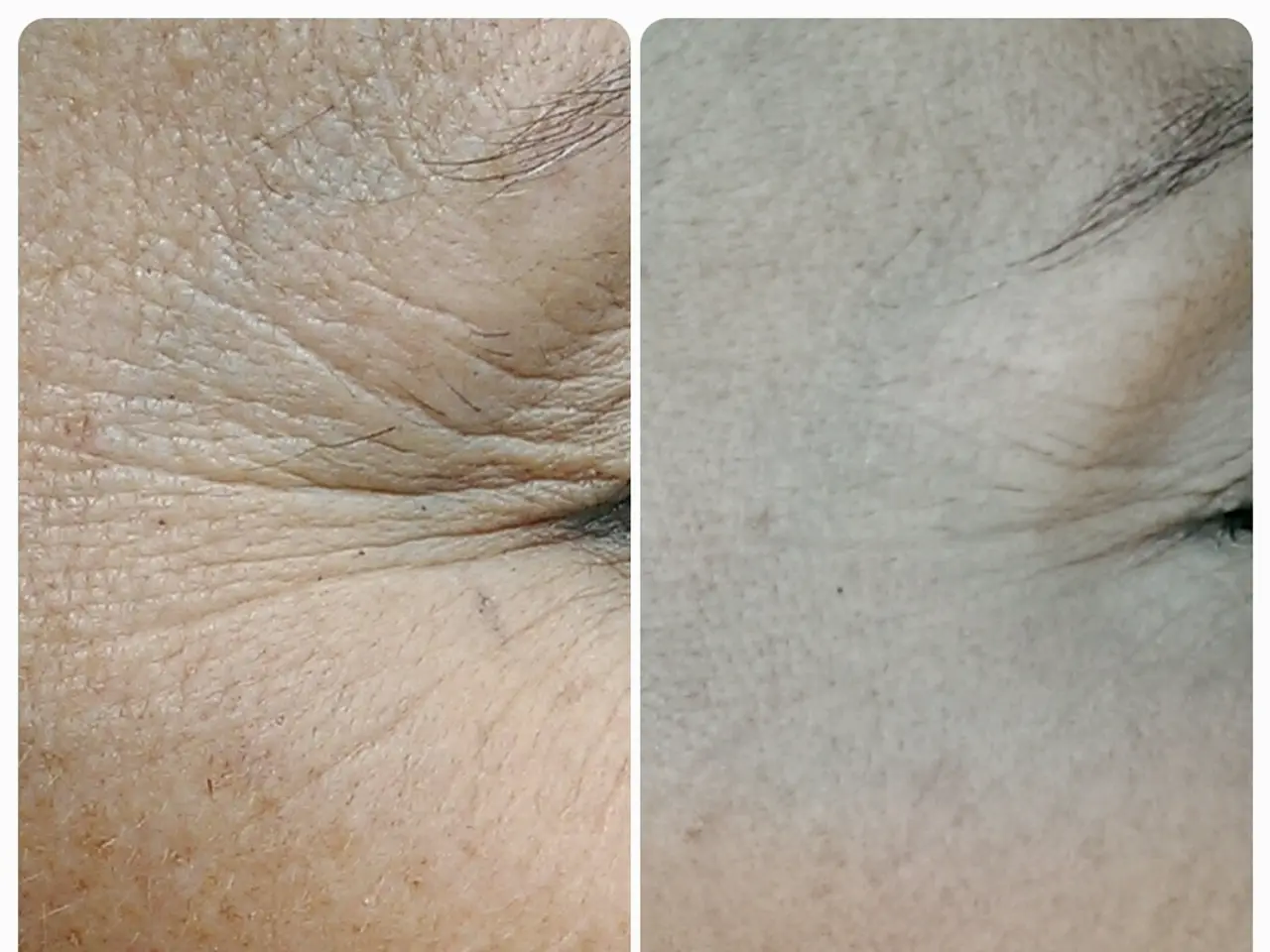Comparing Glycolic Acid and Salicylic Acid: Which One Prevails?
Glycolic Acid and Salicylic Acid, two popular skincare ingredients, have distinct uses and benefits, particularly in the treatment of acne and skin exfoliation.
The Power of Glycolic Acid
Glycolic Acid, an Alpha Hydroxy Acid (AHA), is renowned for its exfoliating properties. It breaks down the bonds between dead skin cells, revealing brighter, smoother skin beneath [3][5]. This wonder ingredient is not only effective in acne treatment but also helps in controlling excess oil, unclogging pores, and reducing acne and acne scars, making it particularly beneficial for dry skin types with acne [1][2].
Glycolic Acid offers additional benefits such as stimulating collagen production, which reduces fine lines, wrinkles, and improves skin elasticity [1][3][5]. It also lightens dark spots, melasma, sun spots, and other pigmentation by speeding cell turnover and breaking down melanin clusters [1][3][5]. Furthermore, it improves sun-damaged skin by reducing pigmentation and enhancing texture [1].
The Might of Salicylic Acid
Salicylic Acid, a Beta Hydroxy Acid (BHA), is oil-soluble and effectively penetrates oily skin and hair follicles [2]. This property makes it particularly effective for oily, acne-prone skin. It dissolves excess sebum and exfoliates inside clogged pores, preventing blackheads and whiteheads [2]. Salicylic Acid also helps reduce acne inflammation and calm irritated skin.
Like Glycolic Acid, Salicylic Acid is used in chemical peels for exfoliating and resurfacing skin, but it targets pores and oily areas more effectively [2].
Comparing Glycolic Acid and Salicylic Acid
| Feature | Glycolic Acid (AHA) | Salicylic Acid (BHA) | |----------------------------|-------------------------------------|-------------------------------------| | Solubility | Water-soluble | Oil-soluble | | Best For | Dry, sensitive skin; anti-aging; pigmentation | Oily, acne-prone skin; pore clogging | | Acne Treatment Effectiveness | Good, better for dry skin types | Superior for oily and acne-prone skin; 74% acne reduction vs 70% with glycolic [2] | | Exfoliation Type | Surface exfoliation | Deep pore exfoliation | | Additional Benefits | Collagen stimulation, anti-aging, pigmentation reduction | Anti-inflammatory, sebum control |
Embracing the Differences
Glycolic Acid is ideal for exfoliation, anti-aging, fading acne scars, and treating hyperpigmentation, especially for dry or normal skin types. It promotes collagen and smooth skin texture [1][3][5].
Salicylic Acid excels at treating oily, acne-prone skin by penetrating pores, exfoliating inside hair follicles, and reducing acne inflammation [2].
Both acids are used in chemical peels and exfoliating products but are chosen based on skin type and specific concerns. Combining glycolic acid with soothing ingredients like niacinamide can enhance benefits while reducing irritation [3].
When using these acids, it's crucial to assess your skin needs carefully and consider adding one or both acids to your routine. With proper use, both acids can significantly enhance the health and appearance of your skin.
Precautions and Proper Use
Overuse or improper application of glycolic and salicylic acids can lead to unwanted reactions such as irritation, peeling, or flaking. Always start with lower concentrations for both acids and gradually increase usage as your skin builds tolerance.
It is best to use these acids on alternating days to prevent over-exfoliation or irritation. If you are unsure which acid is right for you, consult a dermatologist.
Understanding the differences between glycolic acid and salicylic acid will help you choose the right products for your skincare regimen. Avoid mixing these acids with other potent exfoliants, such as retinol or vitamin C, as this can cause irritation and compromise your skin barrier.
Follow a routine that includes cleansing, application, starting slow, moisturizing, and applying sunscreen for both acids. For salicylic acid, consider using a salicylic acid cleanser, optional toner and spot treatment, daily use, moisturizing, and applying sunscreen.
In conclusion, Glycolic Acid is beneficial for those seeking to brighten their complexion or address concerns like uneven skin texture, age spots, or hyperpigmentation. Salicylic Acid is particularly effective for oily or acne-prone skin. Both acids, when used correctly, can lead to healthier, more radiant skin.
- In cases of acne-prone skin, Salicylic Acid, an oil-soluble Beta Hydroxy Acid, effectively penetrates hair follicles and unclogs pores, preventing blackheads and whiteheads.
- Both Glycolic Acid and Salicylic Acid are renowned for exfoliating properties, with Glycolic Acid specifically breaking down bonds between dead skin cells for surface exfoliation, revealing brighter, smoother skin.
- For dry skin types with acne, Glycolic Acid is particularly beneficial as it helps in controlling excess oil, unclogging pores, and reducing acne and acne scars, while also stimulating collagen production for anti-aging effects.
- When using glycolic acid, combining it with soothing ingredients like niacinamide can enhance benefits while reducing irritation, making it suitable for those with sensitive skin.
- Salicylic Acid is also used in chemical peels and exfoliating products, but it targets pores and oily areas more effectively, making it ideal for oily or acne-prone skin.
- Overuse or improper application of glycolic and salicylic acids can lead to unwanted reactions like irritation, peeling, or flaking, so it's essential to start with lower concentrations and gradually increase usage as skin builds tolerance.
- When building a skincare routine, include cleansing, application, moisturizing, applying sunscreen, and consider adding cleansers, toners, and spot treatments containing glycolic or salicylic acid based on skin type and concerns.
- Incorporating science-backed skincare and wellness practices, such as the use of glycolic acid and salicylic acid, alongside a balanced lifestyle, fashion, and beauty choices can significantly improve skin health and appearance.




